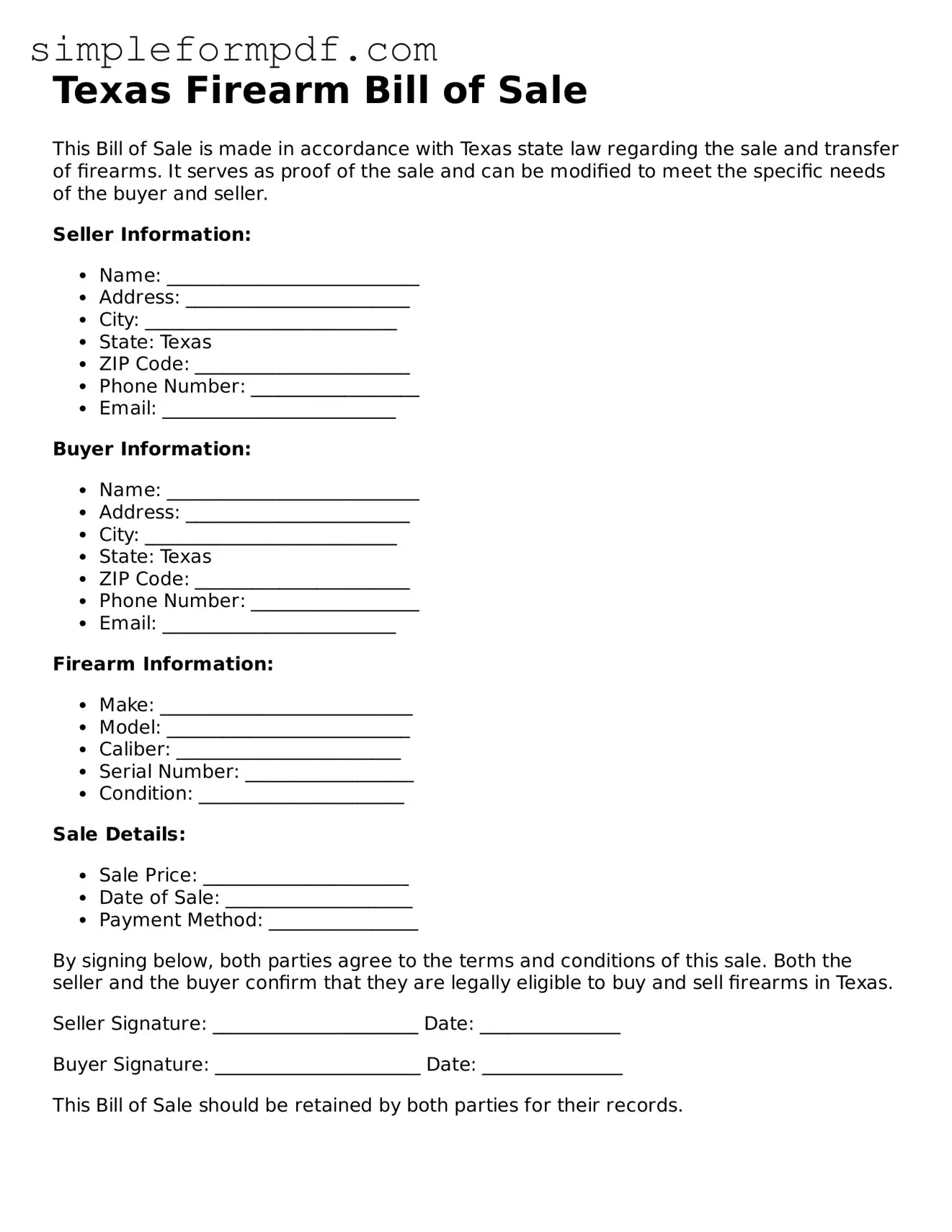Texas Firearm Bill of Sale
This Bill of Sale is made in accordance with Texas state law regarding the sale and transfer of firearms. It serves as proof of the sale and can be modified to meet the specific needs of the buyer and seller.
Seller Information:
- Name: ___________________________
- Address: ________________________
- City: ___________________________
- State: Texas
- ZIP Code: _______________________
- Phone Number: __________________
- Email: _________________________
Buyer Information:
- Name: ___________________________
- Address: ________________________
- City: ___________________________
- State: Texas
- ZIP Code: _______________________
- Phone Number: __________________
- Email: _________________________
Firearm Information:
- Make: ___________________________
- Model: __________________________
- Caliber: ________________________
- Serial Number: __________________
- Condition: ______________________
Sale Details:
- Sale Price: ______________________
- Date of Sale: ____________________
- Payment Method: ________________
By signing below, both parties agree to the terms and conditions of this sale. Both the seller and the buyer confirm that they are legally eligible to buy and sell firearms in Texas.
Seller Signature: ______________________ Date: _______________
Buyer Signature: ______________________ Date: _______________
This Bill of Sale should be retained by both parties for their records.
